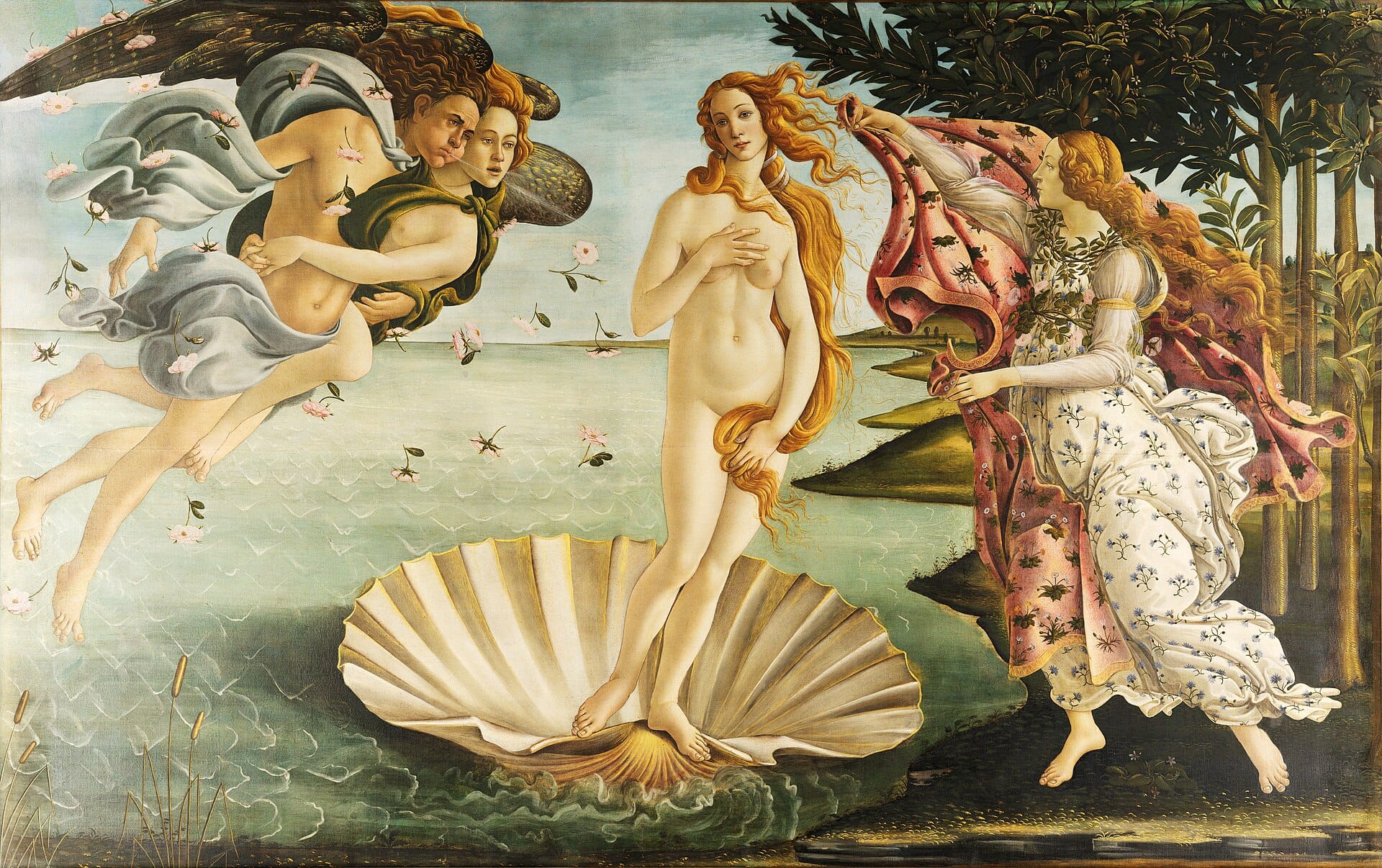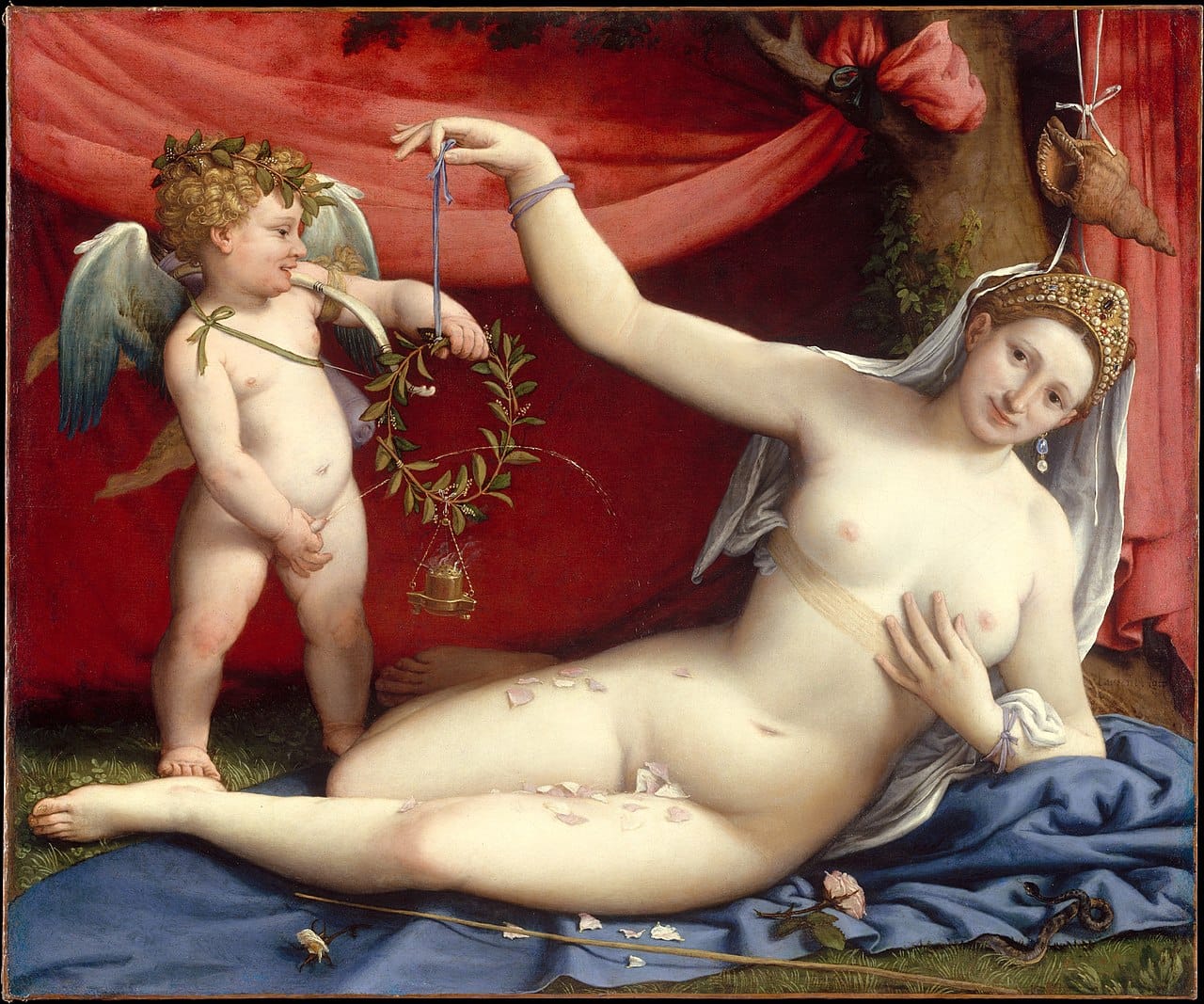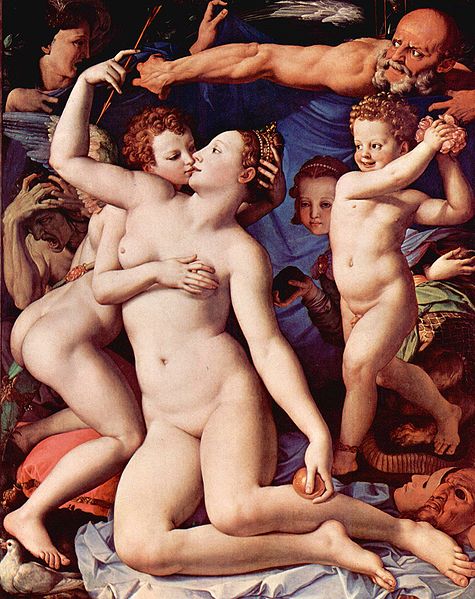Titian's 'Venus of Urbino'

With the revival of Plato's writings in the 15th century, Venus made a comeback, split of course, into naughty Venus Naturalis or Vulgaris - the extravagance of erotic visions seen above in Titian’s Venus of Urbino (1538) - and the demure Venus Coelestis (Heavenly Venus) like in Botticelli’s The Birth of Venus (1484-86) shown below.
Therefore, let there be two Venuses in the soul, the one heavenly, the other earthly. Let them both have a love, the Heavenly for the reflection upon divine beauty, the earthly for generating divine beauty in earthly. – from Ficino's Commentary on Plato's Symposium
Mark Twain affectionately dubbed Titian’s painting “the foulest, the vilest, the obscenest picture the world possesses.” Byron adored it too. And Botticelli’s Venus is one of the most homaged and parodied images in popular culture.

Below is a real life Venus: Piero di Cosimo's Portrait de femme dit de Simonetta Vespucci (1480's). Said to be one of the greatest beauties of the age, she is thought to have inspired Botticelli's Venus (above). She was already dead at this point from tuberculosis, in 1476, aged only 23.

In Lorenzo Lotto's Venus and Cupid (late 1520's), shown below, traditional critics see a bride and symbols of fertility and eroticism, and some see hints of alchemy. Cupid is peeing on his mother Venus through a laurel wreath and she is wearing a crown, veil, and pearl earring, which were associated with brides. The Met speculates that "Venus’s distinctive features suggest that it may be a portrait of the bride." It's definitely an odd painting.

Some critics see incest in Agnolo Bronzino's Venus, Cupid, Folly and Time (circa 1545), with Cupid on the left grabbing her breast and closing in for an erotic kiss. Venus has the arrow though. For another version: here.

Some art critics argue that the wizened figure on the left represents Jealousy, who is possibly sick from syphilis and mercury poisoning. After all, "venereal" is derived from Venus, which means "sexual love" in Latin and it is strikingly close to the word venenum, which means poison or drug in Latin. Love could kill you...
